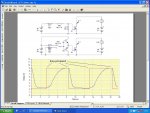Brokenrecord
New Member
Hey guys, I'm very new to the picaxe scene and got interested in it when I realized I could use a picaxe as a very cheap and infinitely more flexible alternative to a retail greenhouse control system (http://www.4hydro.com/growroom/sentinelEVC1.asp). My plan is to control 3 120VAC solenoids (two for irrigation, 1 for c02) and around six 12V computer fans using a picaxe 28X1 powered by a computer power supply. Before I begin though I'd really like to ask a couple of questions from the experts on this forum.
Thanks for all your help and feel free to ask any questions of me if I haven't clarified things enough
- Can a picaxe run reliably off of a 5v lead from a computer power supply?
- Can I control the solenoids directly from the picaxe using this relay http://www.radioshack.com/product/index.jsp?productId=2062478&cp=&sr=1&origkw=reed+relay&kw=reed+relay&parentPage=search?
- What safety precautions (other than grounding the enclosure) must I be sure of when working with 120VAC?
- What is the easiest way to turn on/off 12V computer fans OR vary their speed?
Thanks for all your help and feel free to ask any questions of me if I haven't clarified things enough







